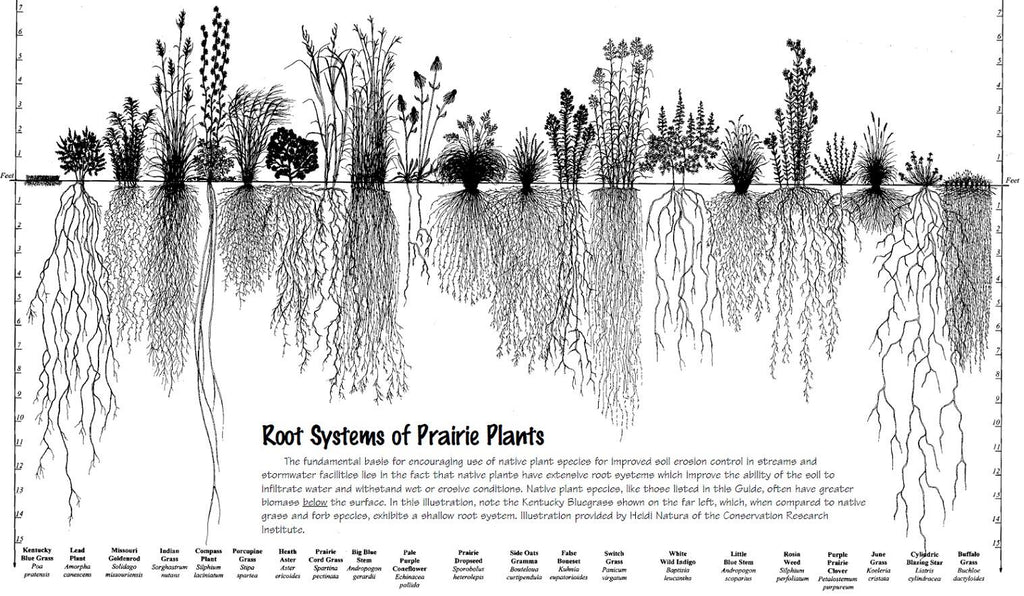The Role of Perennials in a Whole System Farm Design
Many organic or sustainable farming approaches rely heavily upon annual vegetables in their initial phases of farm setup. The reasons for this are obvious and straightforward. Typically the land steward needs a cash crop to help fund further stewardship of the land and annual vegetables generally have a quick economic return and a ready market niche is available in the form of farmers markets’ and CSAs. However, many farmers fall into the pitfall of achieving success with short season annual vegetables and developing a farm system solely based on annuals that includes seasonal labor, greenhouses, walk in coolers, refrigerated trucks, row covers, high tunnels and more. Once the investment is made in this system, it is difficult to find time and or resources to diversify the system to include animals and perennial crops.
Perennial crops should be given strong consideration from the outset of any thoughtful farm design process because their virtues are manifold. Perennials:
- can increase yields inversely proportional to their maintenance over time.
- are generally less represented at farmers markets, in CSAs and other direct marketing channels.
- are more resilient against climate and seasonal vagaries
- Provide erosion control and wind abatement
- Provide habitat for beneficial insects
- Afford yields that benefit other elements of a system such as fodder, nitrogen fixation, wildlife habitat, woody material, mulch, medicine, nectar flow, shade and more.
Short lived perennials such as strawberries, cane berries, artichokes, asparagus, currants, culinary and medicinal herbs should definitely be considered as cornerstones of a well rounded farm or garden system and can be integrated in a way which does not detract from other elements of the farm. Rather the opposite can be true if attention is given to proper assessment and design and these perennials are placed on rocky ground, or areas that are inconvenient for row crop farming. Longer-lived perennials such as blueberries, fruit trees, nut trees, grapes, and kiwis have an equally important role within a whole farm design. Their time to establishment curtails their inclusion in many farm designs; however, their ability to positively affect the farmer’s bottom line should not be overlooked. This is particularly true when one considers weaving these crops into a CSA or direct marketing program and serving the local consumer base more abundantly.
I often see my farm system as a canvas and my goal as the artist is to cover it completely with color in a pleasing cohesive fashion. When I consider that I only have so much land that is fenced and irrigated it is important that I make use of this canvas efficiently and creatively. Integrating perennials into a whole farm can come in many forms. For example, once main field blocks are planted out and opportunity areas emerge to plant fruit trees, or to put red currant bushes between fruit trees, or to plant nitrogen fixing medicinal berry producing Eleagnus multiflora bushes as a livestock paddock border row, or plant every 20th row in a row crop system to Apples with the long term goal of diversifying yields, minimizing long term labor inputs and greatly increasing the net biodiversity of life and food coming from the land. We have also made extensive use of perennial nitrogen-fixing legume sod in our vegetable rotation system, using plants such as red clover, alfalfa, and birdfoot trefoil. Our rotation is a 6-7 year cycle, wherein intensive mixed vegetables are grown for 4-5 years then followed by a cereal grain / perennial legume pasture mix. The yields of this aspect of the rotation can include grain, straw, hay, grazing pasture, nitrogen and organic matter for soil improvement. This mix is allowed to flourish for two years giving that soil a great rest period that is followed by another 4-5 years of intensive mixed vegetables. Integrating perennials is a tremendously worthwhile endeavor that can greatly enhance any farm system.
Don Tipping, 2010


Comments (0)